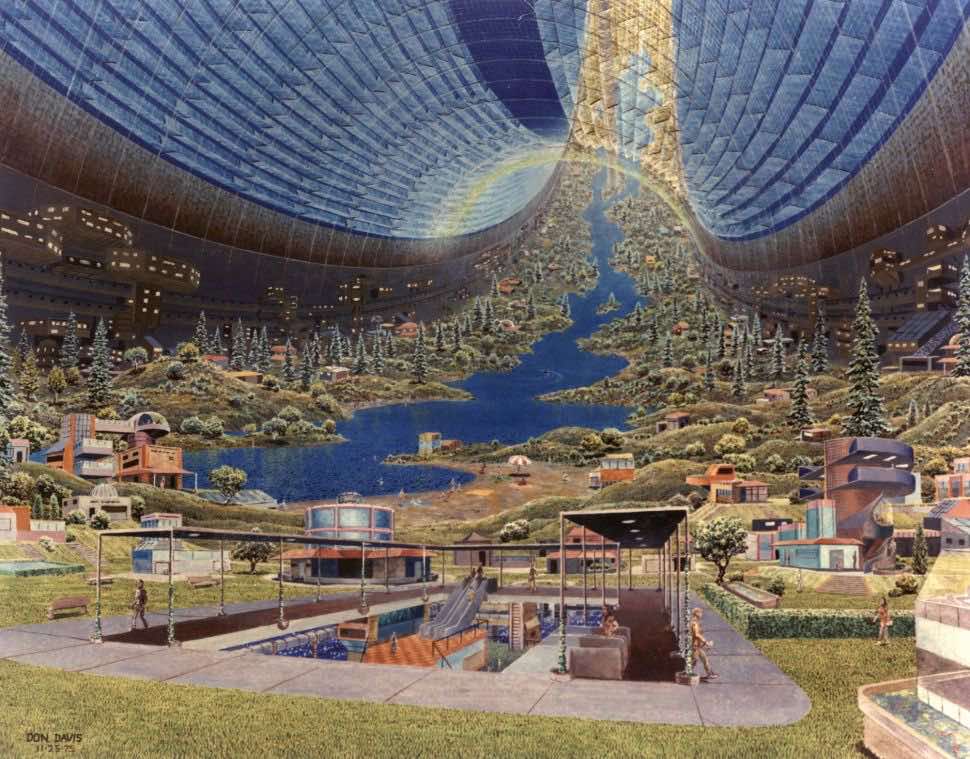
In the early 1970s, Princeton University physicist Gerard O’Neill became a space activist touting plans to build human colonies in outer space. He argued that humans could escape (while helping alleviate) the environmental damage we are causing on Earth by migrating to space habitats housed in cylinders that would be suspended 250,000 miles from Earth at LaGrange Point 5, a spot where the gravitational forces enable objects to just hang there. O'Neill's ideas, while controversial, were mostly sound from a scientific and engineering perspective.
After the New York Times published a front page article about O'Neill, he became a media sensation and quickly developed a very vocal following of space geeks, (some) environmentalists, heads, and future-minded scientists. NASA even jumped in, supporting studies based on O'Neill's research and commissioning the incredible illustrations seen here. O'Neill's specific concepts influenced countless science fiction books and movies and were the seed of bOING bOING patron saint Timothy Leary's plan for humanity's future, SMI2LE (Space Migration, Intelligence Increase, Life Extension.)
His book The High Frontier: Human Colonies in Space is still in-print and captures the wonder and sense of possibility that permeated our culture after the first moon landing and into the 1970s. It's my hope that today's myriad private efforts to make space accessible will re-ignite that desire in everyone to explore and experience what lies beyond our home planet.
The fantastic podcast 99% Invisible told O'Neill's story in an episode titled "Home on Lagrange":




No comments:
Post a Comment